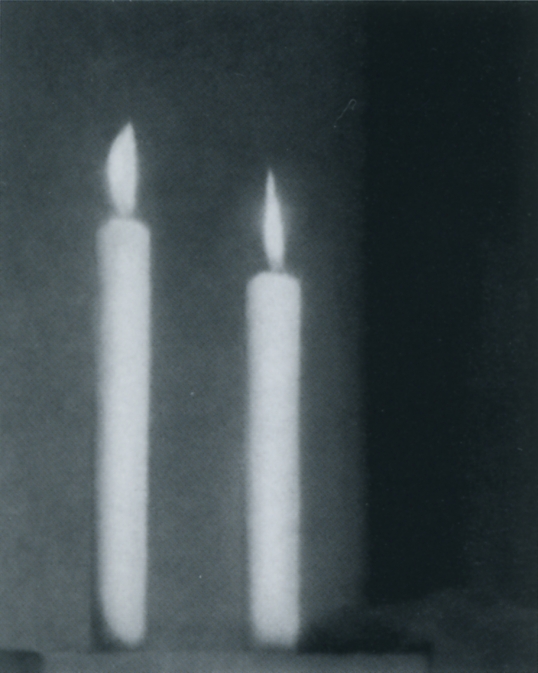Destroyed Gerhard Richter paintings come in a variety of flavors.

Destroyed Richter Grid 004, 2016, it me
Some just get destroyed out there in the rough and tumble world. They're usually the ones listed as "[DESTROYED]" in Richter's Catalogue Raisonné. [I remade a couple this year, including Destroyed Richter Grid 004, above, which was based on a 2009 squeegee painting that's currently the last painting listed as destroyed.]
Others he destroyed himself. For the most part, I think they're not in the CR. Like the batch of super-early Informel-inspired paintings he did when he first arrived in the West, which he burned publicly. And then there's the 60+ early works he destroyed in the late 1960s, either because 1) they were painted with cheap materials, 2) he moved studios and didn't have anywhere to put them, and/or 3) he just grew dissatisfied with them. Richter documented them in his archive, but not in the CR, so I guess they've been destroyed twice.
At some point around the 1980s, when he was developing his signature abstract series, Richter seems to have stopped destroying paintings; instead he overpaints them. A work's never unacceptable, just unfinished, Which I guess is a kind of optimism; nothing is irredeemable.

Zwei Kerze [ÜBERMALT]/ Two Candles [OVERPAINTED], 1982, CR 497-2, image: gerhard-richter
I've been looking at and thinking about these exceptional, destroyed Richters for several years now, but until today, I hadn't really noticed this unusual case of how "[OVERPAINTED]" plays out in the CR. In particular, two early Kerze/Candle paintings are listed as "[OVERPAINTED]" on their original entries, and then again as new works, with new listings, in their overpainted states. Zwei Kerze (1982) starts as CR 497-2 [above], but a year later, it's back as Abstraktes Bild [ÜBERMALT] (1983), CR 536 [below].

Abstraktes Bild [ÜBERMALT]/ Abstract Painting [OVERPAINTED], 1983, CR 536, image: gerhard-richter
CR numbers are not necessarily chronology for Richter, but this painting is bracketed by a series of identically sized abstract paintings he showed (and thus presumably created) together at Konrad Fischer Galerie in Dusseldorf in the summer of 1983. Maybe it was an inspiration or a catalyst, or maybe it was a foil. Or maybe it just got in the way, abstract collateral damage. [It was not included in the show, but another two candles painting was.]

Zwei Kerze [ÜBERMALT]/ Two Candles [OVERPAINTED], 1982, CR 497-3, image: gerhard-richter
Then in 1989, the other, very similar Zwei Kerze, CR 497-3 [above], got a big, old black squeegeeful across the face, and became Abstraktes Bild CR 687-1.

Abstraktes Bild (1989) CR 687-1, the painting formerly known as CR 497-3. image: gerhard-richter
And then CR 536 got a black/white/grey squeegee veil and became Abstraktes Bild CR 687-2. Forget the candles, the bright abstract passages barely make it through to the surface.

Abstraktes Bild (1989) CR 687-2, the painting formerly known as CR 536, f/k/a CR 497-2. image: gerhard-richter
With just a couple of earlier exceptions, 1988-89 is when Richter stepped up his practice of overpainting snapshots and offset prints, including prints of candles. So something was in the air, or rather, the studio.


top: 1982 and 1989. bottom: 1982, 1983, and 1989. images all from you know where
Ever since he constructed his Catalogue Raisonné, Richter has been actively shaping the narrative it tells, editing the list of works included, and the order they appear, using the authoritative construct as a medium in itself. And for whatever reason, as these particular pictures got hit with whatever fresh treatments or gestures were in play at some moment, Richter considered them new works, reborn, and reborn again, while retaining their traces in the history.












